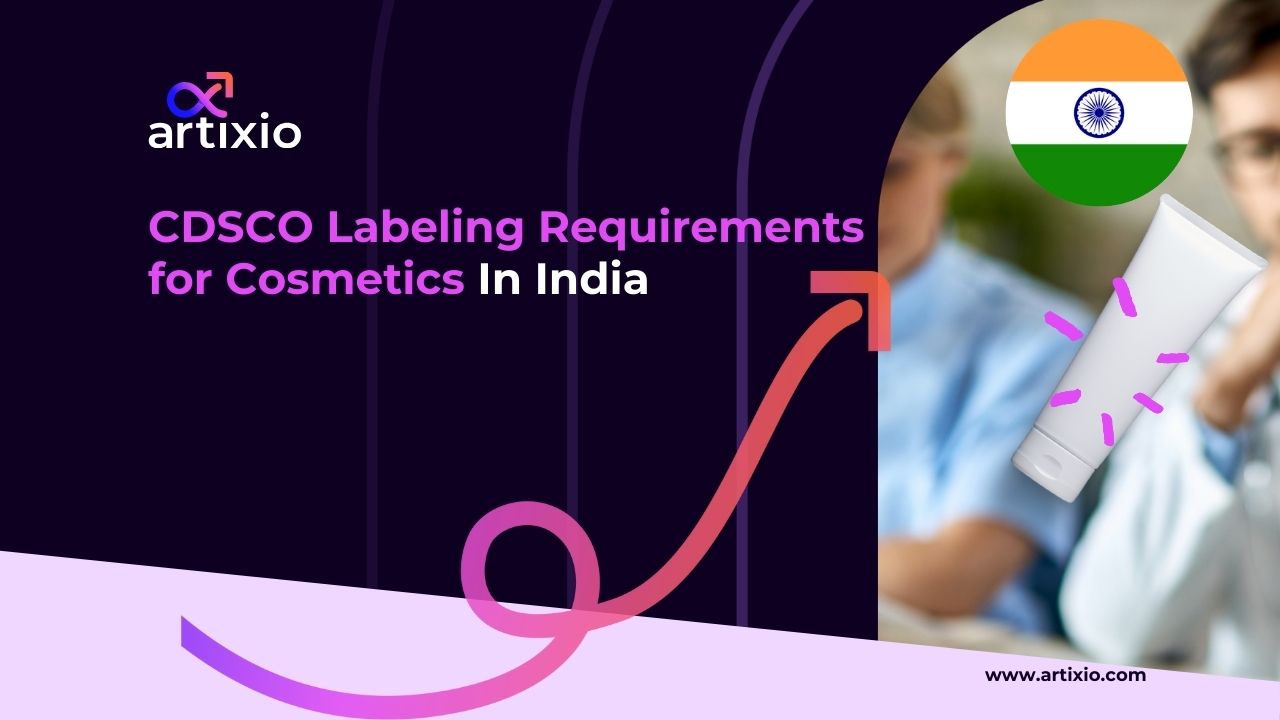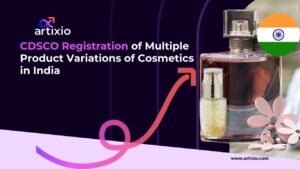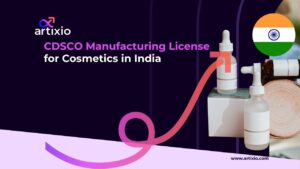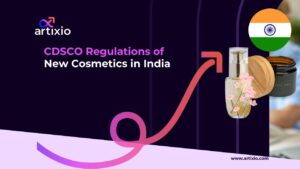The label of cosmetic products is a mode of communication between the manufacturer and the consumer. As all the essential information is displayed on the label, no mistake is acceptable. Thus, to ensure the consumer safety, the CDSCO in India has set in standards for cosmetic label to comply with. CDSCO regulates the cosmetic labelling through the Cosmetic Rules 2020 in India. However, there are other supplementary regulatory bodies such as Legal Meteorology and BIS.
Reading this blog further will provide you with a brief overview of the regulatory requirements of cosmetic labelling in India.
Regulations Governing Cosmetic Labeling In India:
CDSCO’s Cosmetic Rules 2020 – Provides all the guidelines for labeling compliance with the manufacturers and the importers.
- The Legal Metrology Rules, 2011, enacted under section 52(2) – This rule is regulated under the Legal Meteorology Act, 2009, which provides packaging regulations for packaged commodities.
- Bureau of Indian Standards (BIS) – Some additional supplementary guidelines are outlines by BIS, which is applicable according to the Schedule IX of Cosmetic Rules 2020.
CDSCO labeling requirements for cosmetics in India under Cosmetic Rules 2020
The Cosmetic Rules 2020 make it compulsory for certain information to be displayed on the cosmetic label. Following is its requirements:
- Label must be prepared in English or Hindi or can consist of both the languages.
- All the information written on the label should be clear and easy to understand.
- The presentation of labels should be aesthetically pleasing and informative, enhancing the overall appeal of the product while conveying essential information to consumers.
- If required, the label should have warnings clearly mentioned such as “Avoid contact with eyes” “for external use only”, etc.
- No misleading claims should be made on the label.
- The label must have details such as manufacturer’s name, address, production and expiry date, batch number, etc.
Labeling information to be included on inner and outer labels for cosmetics in India under Cosmetic Rules 2020:
The outer label is designed to attract attention and provide consumers with vital information about the product.
The inner label of a product refers to the label attached to the immediate packaging or container of the product, typically concealed from view when the product is on display or in use. The inner label is designed to provide essential information to consumers and regulatory authorities while ensuring that the product remains protected and intact until it is ready for use. The inner label is usually found underneath the outer label and is not immediately visible to consumers.
The Cosmetic Rules 2020 outline specific labeling requirements that must be included on either the outer or inner labels, or both, as stipulated. The following are the requirements according to Cosmetic Rules 2020:
Outer and Inner Label Declarations:
- Cosmetic name
- Manufacturer’s details
- Expiry and Manufacture date
- Manufacturing address
- List of components written in ascending order for ingredients having concentration more than 1%, followed by list of components having concentration less than or equal to 1%
- International symbols as required
Inner Label Specific Declarations:
- Directions of use
- Warnings, precautions, etc.
- Name of the ingredients that may be hazardous or possess potential for risk.
Outer Label Specific Declarations:
- Number of products for multiple product pack
- Net content, weight of solids, etc.
Declarations To Be Mentioned On Either Inner/ Outer Label:
- Manufacturing license number
- Batch no/ Distinctive lot number
In case the cosmetic product has only one label, all the information shall be included in the same label.
In cases where the consignee requests that the manufacturer’s name and address not be displayed, the packaging or containers should feature an approved code number designated by the state Licensing Authority.
Overview Of Labeling Types And Their Regulations:
| Label Type | Regulations | Exemptions |
| Inner |
In case if hazard exists
Adequate directions for safe use Any warning, caution or special direction Name of ingredients with their quantities |
|
| Outer | A declaration of net quantities expressed in terms of weight, solid, fluid, semi-solid, etc. |
Need not appear in case of package of perfume, toilet water, the net content of which does not exceed 60 ml or any package of solid or semi-solid cosmetic of which the net content does not exceed 30 grams
|
| Inner or Outer | Batch number |
Shall not apply to any cosmetic containing 10g or less if the cosmetic is in solid or semi-solid state and 25 milliliters or less if the cosmetic is in liquid state.
In the case of soaps, instead of batch number, the month and year of manufacture of soap shall be given of the label. |
| Manufacturing license number (M, M.L No or Mfg. Lic. No | Not mandatory for imported products | |
| Inner and Outer | Name of the cosmetics Name of the manufacturer Mfg. address Name of the company Mfg. and expiration date |
In case if the cosmetic is 30g or less and in solid or semi-solid state and 60g or less if the cosmetic is in liquid state the name of the manufacturer and the principal place of manufacturer shall be given with pin code
|
CDSCO labeling requirements for imported Cosmetics in India under Cosmetic Rules 2020
For imported cosmetics, additional requirements apply. The import registration certificate number must be mentioned on the label of unit pack (“RC” or “RC No” or “Reg. Cert. No) along with the name and address of the importer.
CDSCO special labeling provisions for certain cosmetics under Cosmetic Rules 2020
Certain cosmetics, such as hair dyes containing specific dyes are subject to special labeling provisions. Hair dyes containing certain ingredients must carry cautionary legends warning users of potential skin irritation.
“Caution.—This product contains ingredients which may cause skin irritation in certain cases and so a preliminary test according to the accompanying directions should first be made. This product should not be used for dyeing the eyelashes or eyebrows; as such a use may cause blindness.”
Each package shall also contain instructions in English and local languages on the following lines for carrying out the test:
“This preparation may cause serious inflammation of the skin in some cases and so a preliminary test should always be carried out to determine whether or not special sensitivity exists. To make the test, cleanse a small area of skin behind the ear or upon the inner surface of the forearm, using either soap and water or alcohol. Apply a small quantity of the hair dye as prepared for use to the area and allow it to dry. After twenty-four hours, wash the area gently with soap and water. If no irritation or inflammation is apparent, it may be assumed that no hypersensitivity to the dye exists. The test should, however, be carried out before each and every application.
This preparation should on no account be used for dyeing eyebrows or eyelashes as severe inflammation of the eye or even blindness may result.”
Special provisions for toothpaste containing fluoride include limiting the fluoride content to not exceed 1000 ppm, with the fluoride content specified in ppm on both the tube and carton packaging. Additionally, the expiry date must be clearly indicated on both the tube and carton packaging.
Conclusion:
Compliance with labeling regulations under the Cosmetic Rules 2020 is vital for manufacturers and importers operating in the Indian cosmetic market. By adhering to these requirements, businesses can demonstrate their commitment to consumer safety, transparency, and regulatory compliance. Moreover, accurate and informative labeling enhances consumer trust and confidence in cosmetics, fostering long-term success and market competitiveness.
Ready to streamline your compliance process and ensure your cosmetics meet all regulatory standards in India? Contact Artixio today for expert guidance and tailored solutions. Let us help you navigate the complexities of regulatory requirements and labeling guidelines so you can focus on growing your business with confidence. Reach out to us now to get started!
FAQs:
Can the label of cosmetics be updated using stickers in India?
Yes, non-detachable stickers can be used for updating cosmetics labels, but they should be overwritten above the essential label elements.
What punishments are imposed upon non-compliance with cosmetic labelling regulations?
Punishments such as product recall, product suspension, and ban of the product or legal penalties may be faced by cosmetic manufacturers.
Are digital QR codes accepted on the cosmetic label by CDSCO?
No, the QR code cannot currently substitute the physical label; however, it can be added for providing more information about the product for consumer awareness.





